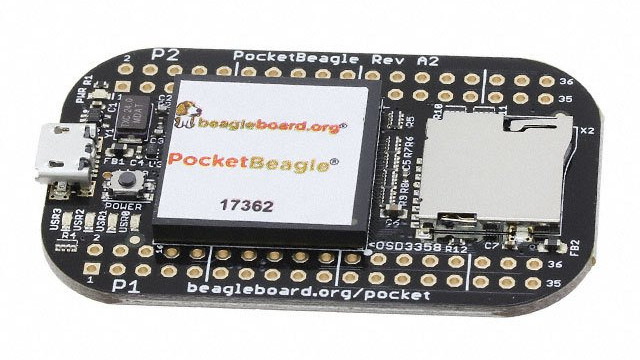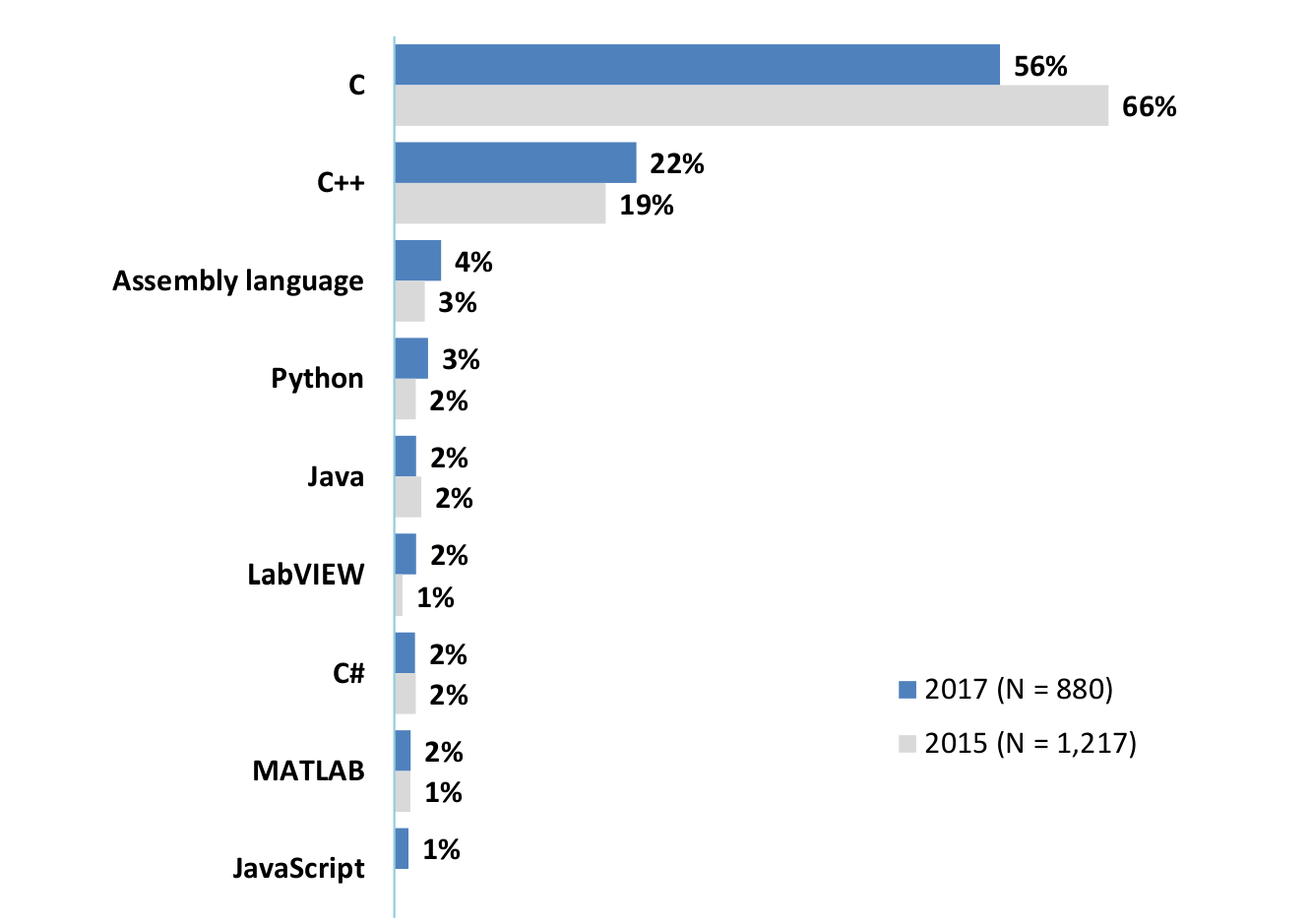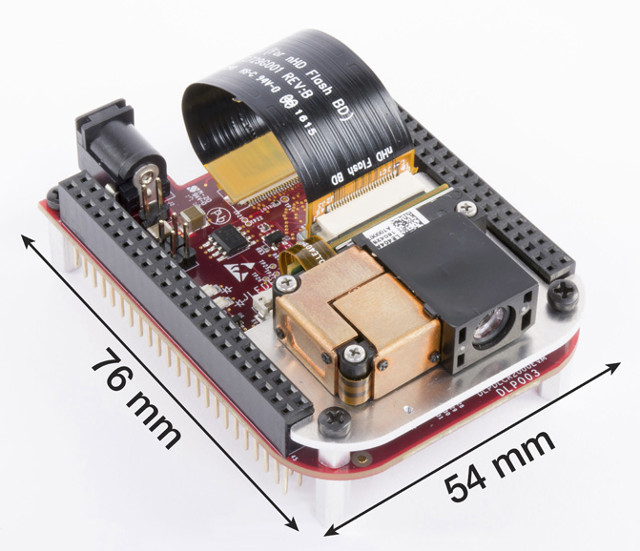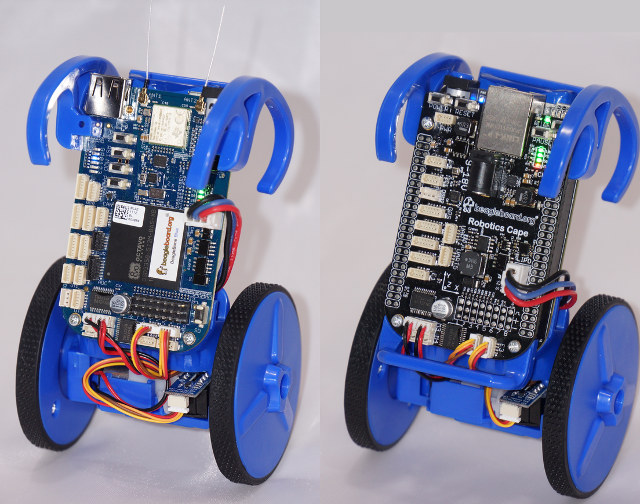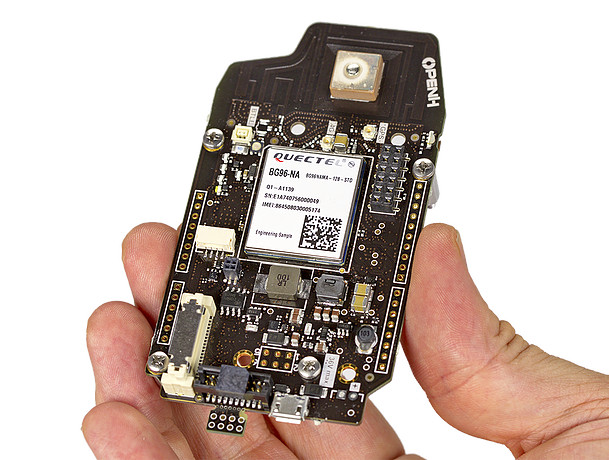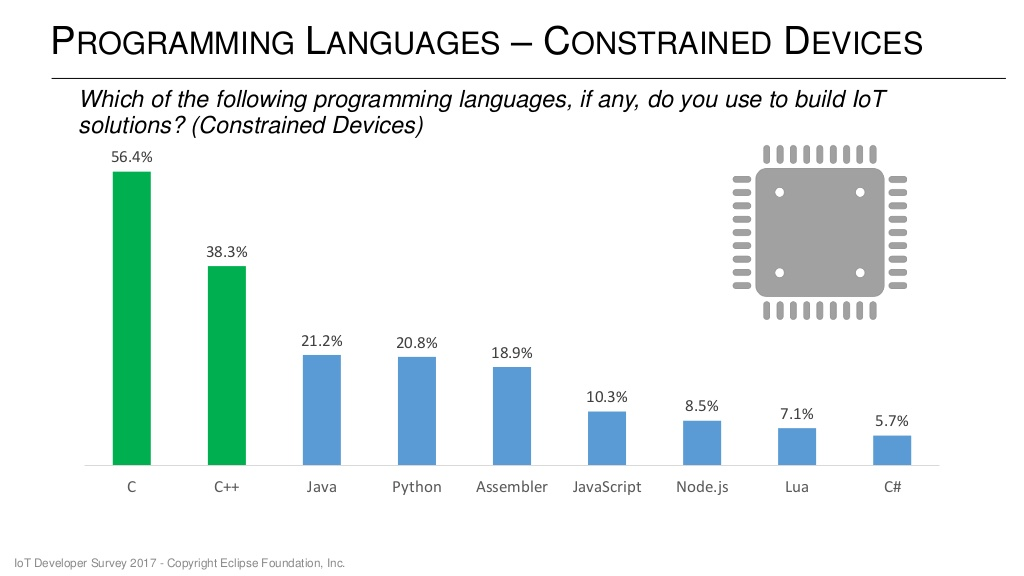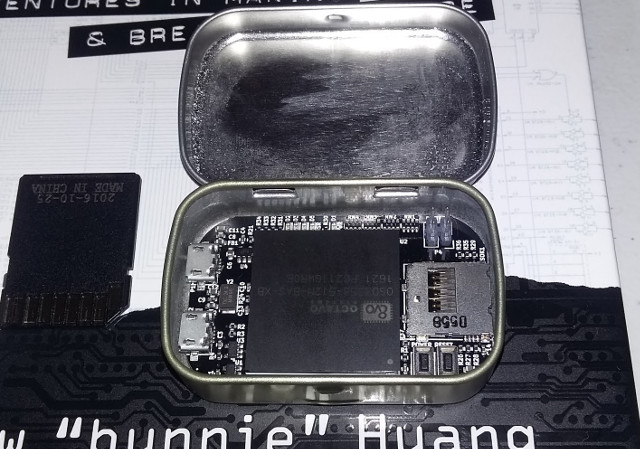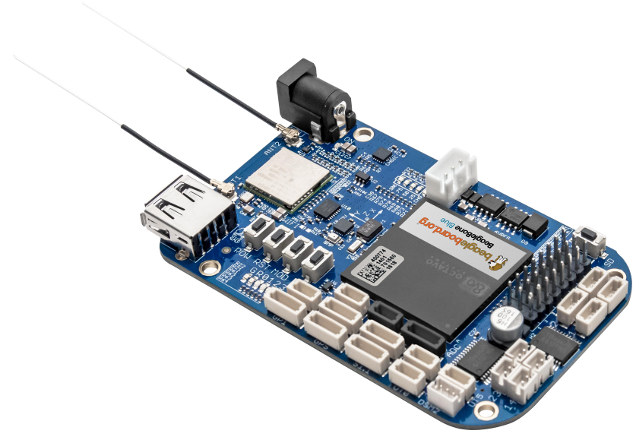Earlier this year, Qwerty Embedded designed PocketBone board, an Eagle & KiCad open source hardware board software compatible with BeagleBone, but much smaller and based on Octavo OSD3358 system-in-package. This was never an official BeagleBoard.org board, and AFAIK it was not made broadly available. But the BeagleBoard foundation has now introduced PocketBeagle with a similar form factor, but based instead on the latest Octavo OSD3358-SM SiP that embeds TI Sitara AM3358, 512MB RAM, a PMIC, and various passive components into a 21×21 package, and exposing more I/Os thanks to 72 through holes. PocketBeagle board specifications: SiP (System-in-Package) – Octavo Systems OSD3358-SM with TI Sitara AM3358 ARM Cortex-A8 processor @ up to 1 GHz, PowerVR SGX530 GPU, 2x PRU, ARM Cortex-M3 for power and security management functions 512MB DDR3 800 MHz 4kB I2C EEPROM TPS65217 PMIC + LDO with integrated 1-cell LiPo battery support Storage – micro SD slot USB – […]
Aspencore 2017 Embedded Markets Study – Programming Languages, Operating Systems, MCU Vendors, and More
Aspencore media group asked readers of their EE Times and Embedded.com websites to fill out an online survey about their embedded system projects. They got 1,234 respondents mostly from North America (56.3%), followed by Europe (25.2%), and Asia (10.6%). This resulted in a 102-page market study which you can download here. I’ve extracted a few slides to have a look at some of the trends. C language is still the most used language in embedded systems, but other languages like C++, Python and even assembly language are gaining traction. Operating system is more spread with Linux being the most used via Embedded Linux distributions, Debian, and Ubuntu. FreeRTOS comes in second place, while Android registers fourth with 13%. Git has finally supplanted Subversion in 2017, with all other version control software losing ground. Switching to some hardware slides, 44% used a development board to start their embedded design with ST […]
DLP LightCrafter Display 2000 EVM Adds a Pico Projector to BeagleBone Black for $99
Back in 2012, Texas Instruments introduced DLP LightCrafter pico projector evaluation module powered by a TMS320DM365 ARM9 processor @ 300 MHz running embedded Linux, and selling for $599. Since then, we have seen many products including projectors based on DLP technology such as standalone tiny projectors, Windows mini PCs, Android TV boxes, tablets, an even light bulbs. However, so far I can’t remember seeing any easy way to easily integrate DLP projector with the cheap ARM Linux development boards available today. Texas Instruments has now filled that void with DLP LightCrafter Display 2000 EVM that adds a pico-projector to BeagleBone Black (or Green) based on the new 0.2″ DLP2000 DMD (Digital Mirror Device) chip. The board is comprised of two subsystems: Light engine (top) with the optics, red, green, and blue LEDs, and the 640 × 360 (nHD) DLP2000 DMD configured to deliver around 20 lumens by default (this can […]
EduMIP Self-Balancing Robot Kit Based on BeagleBone Blue is Now Available for $50
BeagleBone Blue is a board designed for robotics projects, and one of those projects is EduMIP self-balancing robot that was first designed around BeagleBone Black and a robotics cape, but so far was not available for sale. Renaissance Robotics is now selling the kit, without board, for $50. The kit has been designed by UC San Diego Coordinated Robotics Lab in order to teach robotics to students, and it works with BeagleBone Blue, or BeagleBone Black with the Robotics Cape and an optional WiFi dongle. Some of the subjects that can be learned with eduMIP include: Dynamic modeling and feedback control (classical, state-space, adaptive, …) of unstable systems. Robot motion planning and collision avoidance. DC motor control via (built-in) H-bridges and encoder counters. Attitude estimation via (built-in) IMU and barometer. Communication via (built-in) WiFi (802.11b/g/n) and Bluetooth (4.1/BLE). Charging, balancing, protection, and monitoring of 2-cell LiPo (included). Multithreaded event-driven C programming […]
OpenH PULSAR and QUASAR Boards Add 4G LTE Cat M1, or Cat 4/1 to Raspberry Pi Boards
We’ve seen a bunch of IoT boards with 2G connectivity recently including Orange Pi 2G-IoT, Wio GPS, and Nadhat, but while in some countries 2G will still work for many years, those boards are already obsolete – or soon will be – in many other countries. However, finding low cost 3G / 4G boards is more difficult, and while one solution is to use 3G or 4G USB dongles, “OpenH – Open Hardware” – part of KLiP Industries – has designed two boards with 4G connectivity provided by Quectel modules. OpenH PULSAR Board PULSAR board is compatible with Arduino Zero and features the following specifications: MCU – Atmel/Microchip SAMD21 ARM Cortex M0+ MCU (the as the one used in Arduino Zero) Connectivity 4G LTE Cat M1 modem with GPS (Quectel BG96-NA); No external antennas required Bluetooth and NFC Security – Dedicated management CPU with crypto engine Power Supply 10W digital power supply and battery charger with direct solar input FCC […]
Top Programming Languages & Operating Systems for the Internet of Things
The Eclipse foundation has recently done its IoT Developer Survey answered by 713 developers, where they asked IoT programming languages, cloud platforms, IoT operating systems, messaging protocols (MQTT, HTTP), IoT hardware architectures and more. The results have now been published. So let’s have a look at some of the slides, especially with regards to programming languages and operating systems bearing in mind that IoT is a general terms that may apply to sensors, gateways and the cloud, so the survey correctly separated languages for different segments of the IoT ecosystem. C and C++ are still the preferred languages for constrained devices, and developers are normally using more than one language as the total is well over 100%. IoT gateways are more powerful and resourceful (memory/storage) hardware, so it’s no surprise higher level languages like Java and Python join C and C++, with Java being the most used language with 40.8% […]
PocketBone Board Based on Octavo Systems OSD3358 SiP Fits into an “Altoids Smalls” Mint Tin Box
Last year, Octavo Systems introduced OSD3358 System-in-Package (SiP) that includes Texas Instruments Sitara AM3358 processor, 256MB to 1GB RAM, a PMIC and an LDO into a single package. Since then the SiP has been found in BeagleBone Black Wireless and BeagleBone Blue, and at the time of launch there was also some development around PocketBone, a tiny open source hardware Smalls mint tin sized board based on OSD3358, which is smaller than a CHIP board, but a little bigger than NanoPi NEO board. There’s now been some progress with prototypes of the board manufactured with the following specifications: SiP (System-in-Package) – Octavo Systems OSD3358 with TI Sitara AM3358 ARM Cortex-A8 processor @ up to 1 GHz, PowerVR SGX530 GPU, PMIC + LDO, and 512MB DDR3 Storage – micro SD slot USB – 2x micro USB port one for power, one OTG port Expansion – 10-pin header (unpopulated) with SPI, I2C, […]
$80 BeagleBone Blue Board Targets Robots & Drones, Robotics Education
Last year, we reported that BeagleBoard.org was working with the University of California San Diego on BeagleBone Blue board for robotics educational kits such as EduMiP self-balancing robot, and EduRover four wheel robot. The board has finally launched, so we know the full details, and it can be purchased for about $80 on Mouser, Element14 or Arrow websites. BeagleBone Blue specifications: SiP (System-in-Package) – Octavo Systems OSD3358 with TI Sitara AM3358 ARM Cortex-A8 processor @ up to 1 GHz, 2×32-bit 200-MHz programmable real-time units (PRUs), PowerVR SGX530 GPU, PMIC, and 512MB DDR3 Storage – 4GB eMMC flash, micro SD slot Connectivity – WiFi 802.11 b/g/n, Bluetooth 4.1 LE (TI Wilink 8) with two antennas USB – 1x USB 2.0 client and host port Sensors – 9 axis IMU, barometer Expansion Motor control – 8x 6V servo out, 4x DC motor out, 4x quadrature encoder in Other interfaces – GPIOs, 5x UARTs, 2x […]


